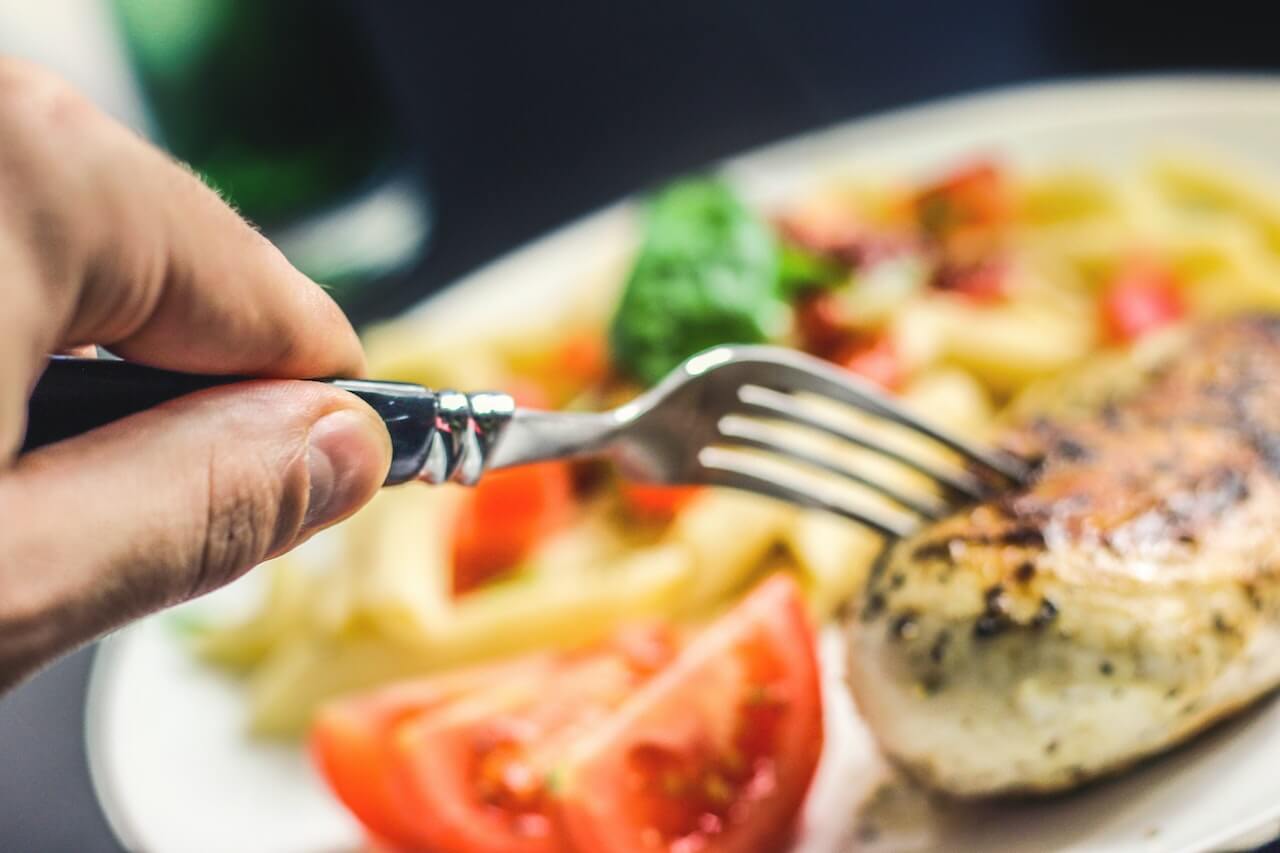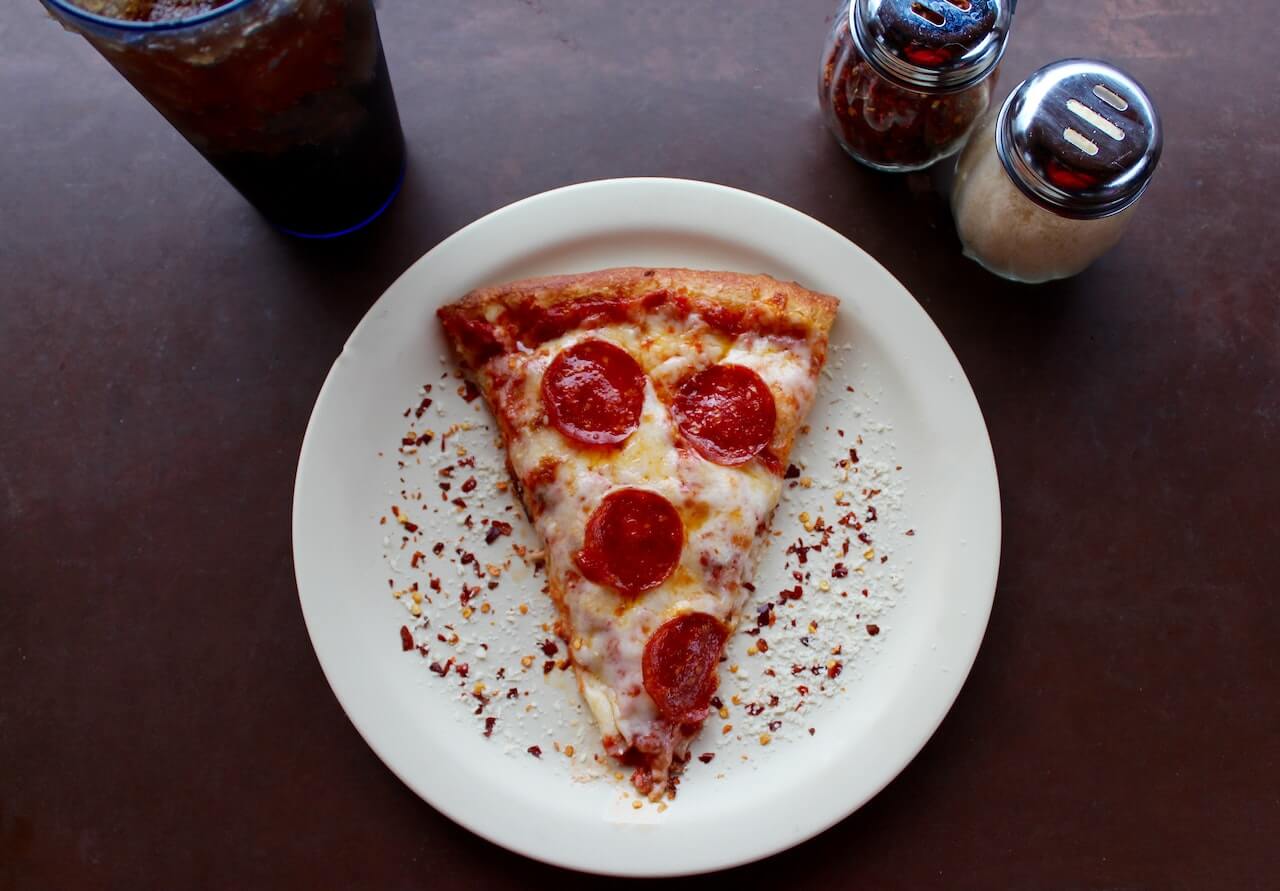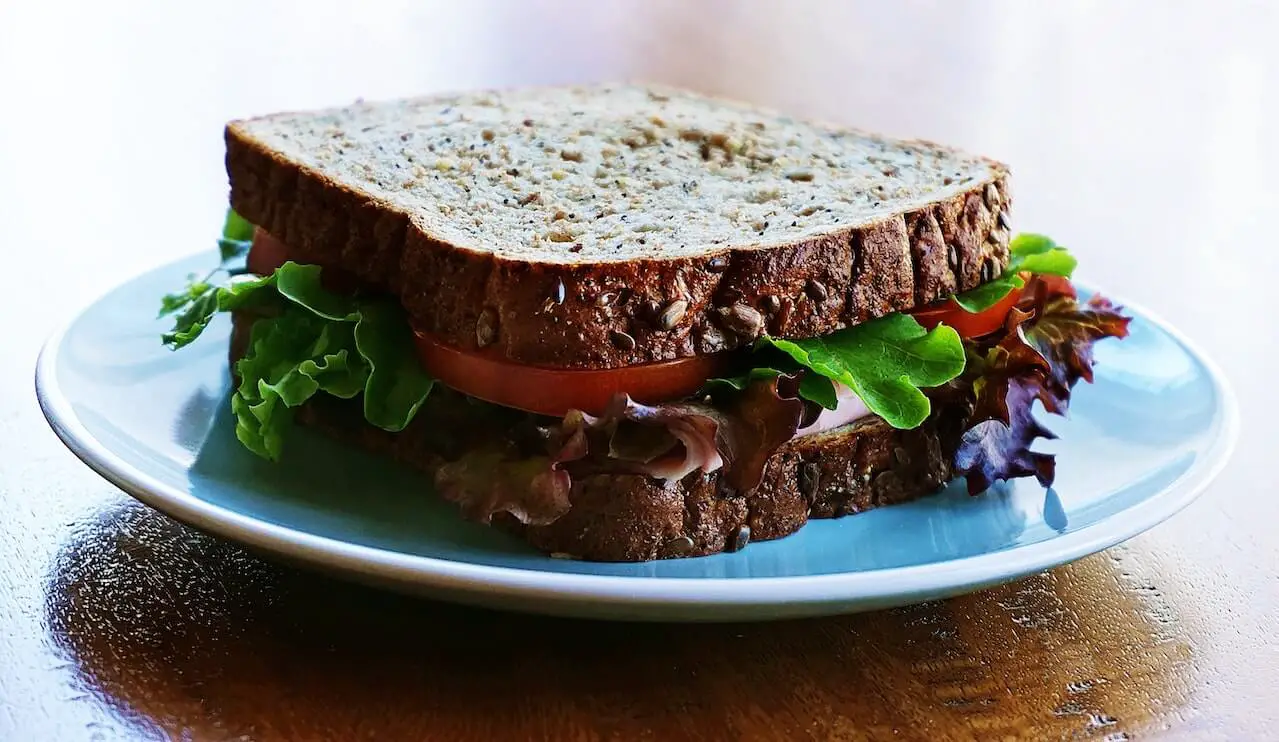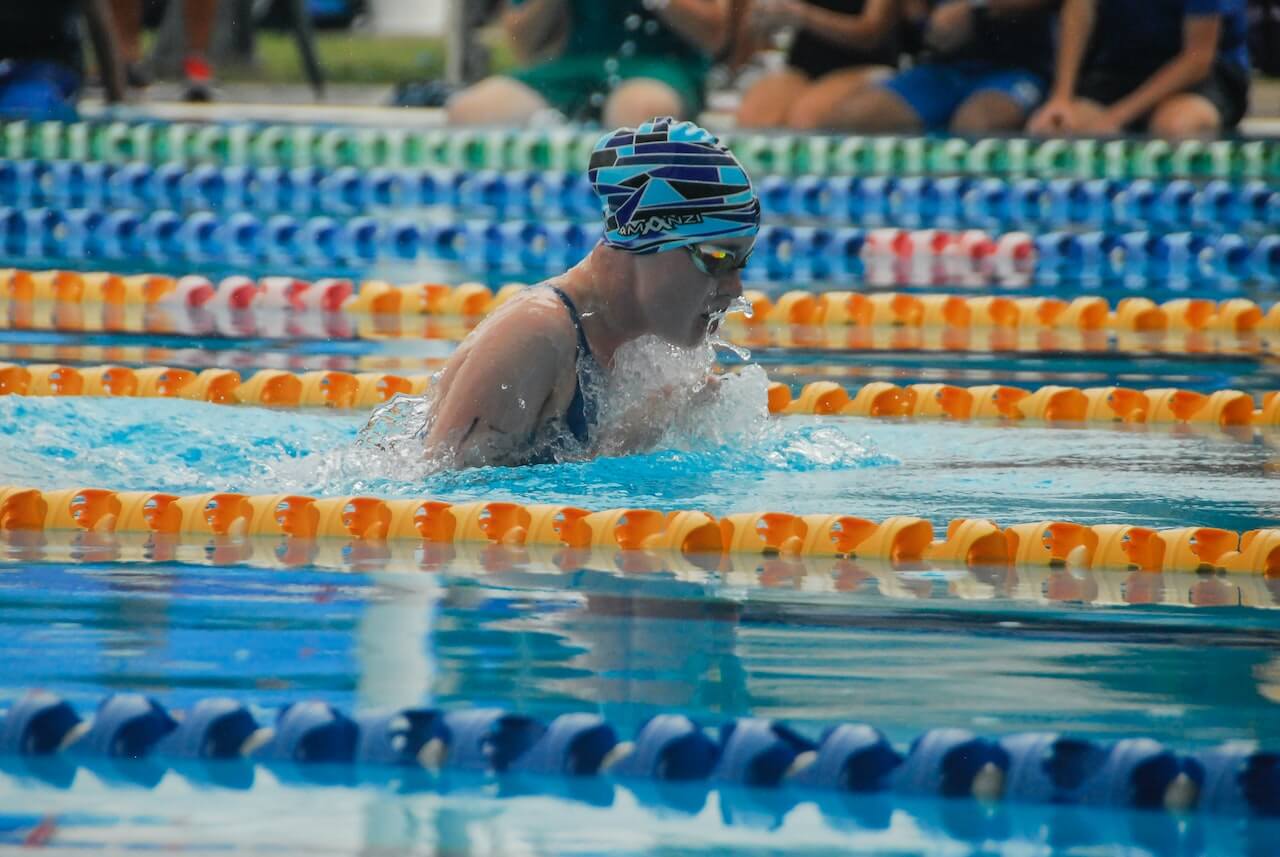You’ve probably heard it countless times growing up: wait at least 30 minutes or an hour to swim after eating. This age-old advice has been passed down from generation to generation, but have you ever wondered where it came from and whether it holds any truth?

You don’t need to strictly adhere to the 30-minute rule before swimming if your concern is drowning. However, it’s still a good rule to follow to avoid the discomfort of muscle cramps and exercising on a full stomach, which can negatively affect your performance.
Since each individual’s response to food and exercise may vary, you must determine your own limits and make educated decisions about when to dive back into the water. Keep reading on to learn more about how you can eat before swimming.
The Myth Behind Waiting to Swim After Eating
Origins of the Myth
You might have grown up hearing that you should wait at least 30 minutes or perhaps even one hour after eating before diving into the pool or swimming in the ocean.
This popular belief stems from the idea that after a meal, blood is diverted away from your limbs and towards your digestive system to help process the food. This would then lead to muscle cramps and even the risk of drowning.
In reality, this myth has been around for generations and has become an ingrained part of our cultural wisdom.
It’s likely that our grandparents, and even our great-grandparents, heard the same advice growing up.
The fear behind the myth likely comes from a combination of wanting to keep children safe around water and misinterpreting the body’s natural processes.
Scientific Basis
The truth of the matter is that the idea that it is necessary to wait to swim after eating is largely fiction.
While it’s true that blood flow does increase to your digestive system after eating a meal, it doesn’t divert enough blood away from your arms or legs to make swimming dangerous.
In fact, swimmers and athletes often eat before their workouts or competitions to give their bodies the energy and necessary nutrients to perform optimally.
You might be more prone to getting a side cramp in your abdomen from eating, but it is not a major risk factor to the point that you should be fearful of your life.
To put it simply, there’s no concrete scientific evidence to support the idea that you must wait to swim after eating.
The Real Concerns: Blood Flow and Cramps
Blood Flow and Digestion
When you eat, your body redirects blood flow from around your body to your digestive system to help break down the food and absorb the nutrients. This is a normal physiological response to ensure proper digestion.
However, some people may fear that engaging in physical activities, such as swimming after eating, might hinder blood flow for digestion, causing discomfort or even accidents.
But, there’s no need to worry, as there’s no evidence indicating that exercise after eating, including swimming, would cause blood flow issues or other significant harm.
In fact, light to moderate activities post-meal can actually aid digestion and promote overall health. Just be mindful of your body’s signals and refrain from overexerting yourself immediately after a heavy meal.
Cramps
Another concern when it comes to swimming after eating is the risk of experiencing muscle cramps. Muscle cramps can be painful and occur when your muscles involuntarily contract or spasm.
Several factors can contribute to muscle cramps, such as dehydration, electrolyte imbalances, and muscle fatigue.
You might be thinking that swimming after eating might cause muscle cramps due to blood being diverted to the digestive system.
However, there’s no concrete evidence to prove this notion. Muscle cramps during swimming are more likely a result of dehydration or overexertion, rather than digestion.
To reduce the risk of cramps while swimming or engaging in other physical activities, consider the following tips:
- Stay hydrated by drinking plenty of water before, during, and after exercise.
- Avoid overexerting yourself, especially after consuming a heavy meal.
- Warm up properly before swimming to help prepare your muscles for the activity.
- Incorporate stretching and flexibility exercises into your routine to maintain healthy muscles.
Listen to your body and use your best judgment when deciding to swim or engage in any physical activity after eating.
Factors Affecting Digestion and Swimming
Type of Food

Different types of food affect digestion and how quickly you’ll feel comfortable swimming after a meal. For example:
- Foods high in fat typically take longer to digest, which means you may feel heavy or sluggish in the water.
- Foods rich in carbohydrates provide quick energy, making them a better choice if you plan to swim soon after eating.
- Protein-rich foods also digest more easily and can offer a good balance of energy and satiety without causing discomfort in the water.
To put things into practice, you might enjoy a light sandwich with lean protein like turkey or chicken, some whole-grain bread, and fresh veggies for an optimal pre-swim meal.
Swimmers, especially athletes, could benefit from carbohydrate-rich snacks like bananas or energy bars before hitting the pool.
Amount of Food

The size of your meal also influences the time it takes to digest and how you feel while swimming.
Larger meals require more time to break down and can lead to a feeling of fullness or even cramping during your swim.
For ease and comfort, it’s best to have smaller, more frequent meals or snacks if you plan to swim regularly.
Here is a guideline for how long to wait before swimming, based on meal size:
- Small snack (e.g., fruit, yogurt, or energy bar): 15-30 minutes
- Light meal (e.g., sandwich, salad): 30-60 minutes
- Large meal (e.g., dinner-sized portion): 2-3 hours
Individual Differences
Individual factors, such as metabolism, age, and swimming experience, can also affect digestion and how swimming feels post-meal.
Children and seasoned athletes typically have faster metabolisms, allowing them to digest food more quickly and feel comfortable swimming sooner after a meal.
On the other hand, those with slower metabolisms, such as older individuals or people with certain health conditions, may need to wait a bit longer after eating.
The key is to listen to your body and learn what works best for you over time. Keep in mind that digestive behaviors can change, so stay aware of how you feel and adjust your pre-swim eating habits accordingly.
Safe Swimming Practices After Eating

Wait Times Based on Meal Size
When considering how long to wait before swimming after a meal, take the size of your meal into account. For light snacks or small meals, waiting around 30 minutes should be sufficient.
However, for larger meals, it’s recommended to wait at least 1-1.5 hours before getting into the water. This allows your body enough time to begin digesting the food, minimizing the risk of discomfort or cramps while swimming.
Swimming Intensity
The type of swimming activity and the intensity at which you plan to swim also plays a role in determining how long to wait after eating. For example:
- Casual swimming at a leisurely pace: You can safely start swimming 30 minutes after eating a light meal or snack.
- Vigorous swimming or training: Wait at least 1-1.5 hours after a small to medium-sized meal, and even longer after a large meal, as the increased intensity will require more energy and blood flow to your arms and legs.
Signs to Look Out For
While swimming on a full stomach doesn’t directly increase your risk of drowning, it can lead to certain issues such as nausea, cramps, or general discomfort. Here are some signs to watch out for:
- Feeling bloated or full
- Stomach cramps or discomfort
- Nausea or dizziness
If you experience any of these symptoms while swimming, slow down, take a break, or get out of the water to give your body time to recover.
Additionally, consuming alcohol before swimming can impair your judgment, coordination, and swimming abilities, potentially increasing the risk of drowning. Alcohol can also dehydrate you, increasing your risk of getting cramps. Do not drink alcohol prior to swimming.
Frequently Asked Questions
Can You Eat Before Swimming?
Eating before swimming might increase your risk of experiencing some discomfort, like stomach cramps, due to your muscles being used for digestion and swimming at the same time. However, the idea that it is extremely dangerous to eat before swimming is mostly a myth. Swimming short distances or at a slow pace is generally safe, even after a meal. Just listen to your body and be cautious of any discomfort or heavy breathing while swimming.
How Long Should Adults Wait to Swim After Eating?
As an adult, you can typically return to swimming after waiting about 30 minutes to an hour after eating. This allows your body to digest the food properly and prevent possible stomach cramps or regurgitation. Keep in mind that if you’ve had a particularly heavy meal, it could take up to 2 hours for your stomach to fully empty. If this is the case, waiting a bit longer before swimming would be advisable.
How Long Should Children Wait to Swim After Eating?
In general, children should also wait about 30 minutes to an hour after eating before swimming. This gives them time to digest their meal and reduces the risk of experiencing any discomfort. However, each child is different, and some may need more or less time to digest food. As a parent or guardian, observe your child for any signs of discomfort after eating, and encourage them to take it slow and easy during their first few minutes in the water.
Sources:
- https://newsnetwork.mayoclinic.org/discussion/mayo-clinic-minute-should-you-wait-30-minutes-to-swim-after-eating/
- https://www.bbc.com/future/article/20130401-can-you-swim-just-after-eating
- https://www.goodrx.com/well-being/diet-nutrition/can-swim-after-eating
- https://www.eatthis.com/swimming-after-eating/

